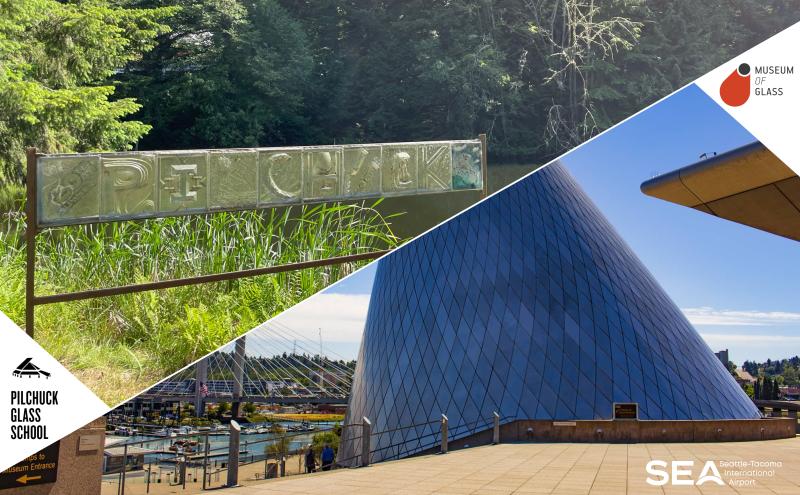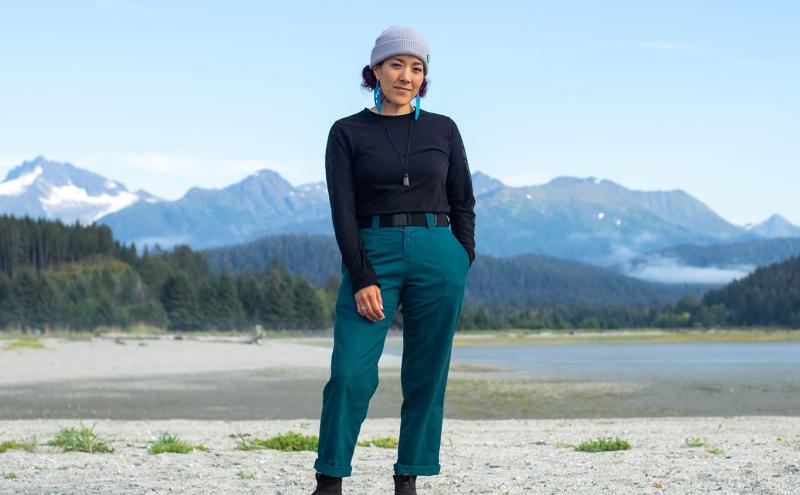
Starting in 2026, travelers at Seattle-Tacoma International Airport (SEA) can experience Native artist Crystal Worl’s work both inside the airport and on the airfield.
Worl and fellow artist Fumi Amano were selected to create public art installations for SEA Airport’s C Concourse Expansion project as part of a first-of-its-kind residency partnership between the airport and two iconic glass art entities — Pilchuck Glass School and the Museum of Glass. The Pilchuck residency allows artists to brainstorm ideas; the Museum of Glass residency helps them produce these ideas into a final product for display at the airport.
And earlier this year, Alaska Airlines debuted an aircraft featuring Worl’s design, titled: Xáat Kwáani (Salmon People). It’s the first aircraft in the history of any domestic airline to be named in an Alaska Native language and to depict the ancestral importance through Northwest Coast indigenous formline art, which is characterized by curving lines and shapes and dates back thousands of years.
This summer, Worl completed her two-week residency at Pilchuck, and will complete a second five-day residency at the Museum of Glass, likely in 2024. Her finished piece will be on display at the airport in 2026 with the opening of the new C Concourse.
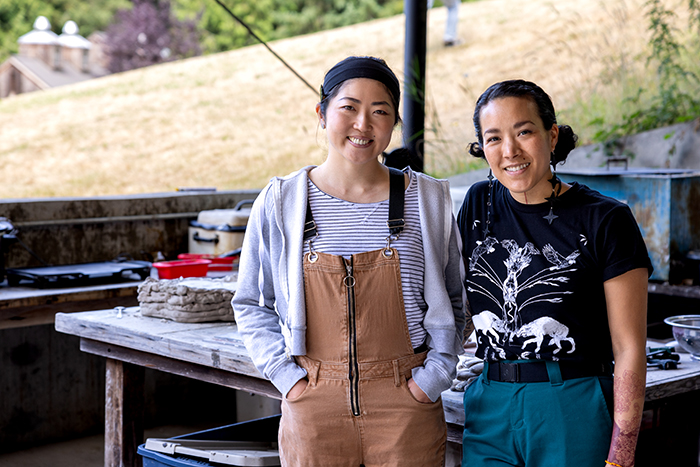
Indigenous and travel connections
Worl’s connection to her Native heritage threads itself through much of her work. Worl is Athabascan, Filipino, and Tlingit from Raven moiety, Sockeye Clan, from the Raven House. She is Deg Hit’an Athabascan from Fairbanks Alaska and currently lives in Juneau, Alaska. Her work is diverse, ranging from Tlingit Northwest Coast design to contemporary multimedia pieces.
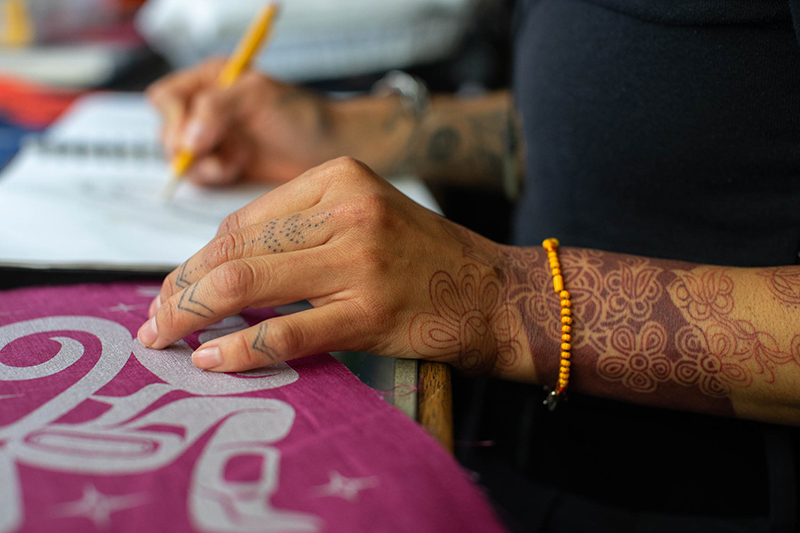
Worl’s plans for her C Concourse piece reflect her love for travel and the time she spent at SEA as a child on her way to visit family and looking at the art on display. As an international gateway and a gateway to Alaska, SEA is the perfect venue for Worl to express that passion.
“I travel a lot. Ever since I was a little girl, I've always been curious about traveling and exploring. Maybe it's the Athabascan in me. We migrated a lot; we're nomadic people. So maybe it's just in my DNA to be curious. And I remember thinking from a young age, I want to be an artist, but I want to travel the world, and how do I do both? How do I take my art around the world? Or maybe my art could take me around the world?”
Worl has used art to fuel her passion for travel, building residencies where she can live abroad for months at a time. She makes the most of each trip, bringing a little portable artist studio in her suitcase and seeking out other artists in the communities she visits.
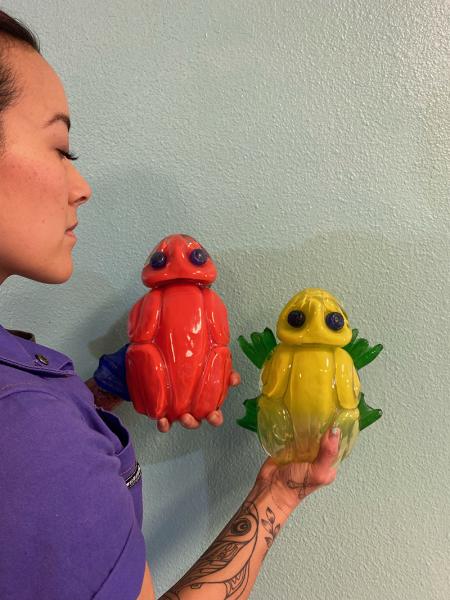 Inspired by heritage
Inspired by heritage
Worl also attributes her artistic inspiration to the creative community she grew up around and the blend of a traditional and modern upbringing. She participated in potlatches, ceremonies, and gatherings to connect with heritage, while attending school to study and follow her passions. Her family emphasized the importance of learning modern tools so she could become a better community member.
Her mom showed her how to bead, her grandmother taught her how to sew, and her family made their own regalia, which represents family and clan.
“Growing up with that upbringing is just normal for me, but the more I started traveling, as I got older and started going to school, the more I realized that was very special and very unique. And people are very fascinated by it. Native art can be respected and embraced, and it's beautiful and it should be shared, but in a respectful manner. And so having this opportunity and this platform as an indigenous artist is really cool.”
Her work bridges multiple worlds — the indigenous artist community that practices formline design and the glass artist community. “It's challenging because glass makers don't necessarily understand what formline is unless they are a Native artist. It's a fun challenge. It's really making me scratch my brain.”
License to explore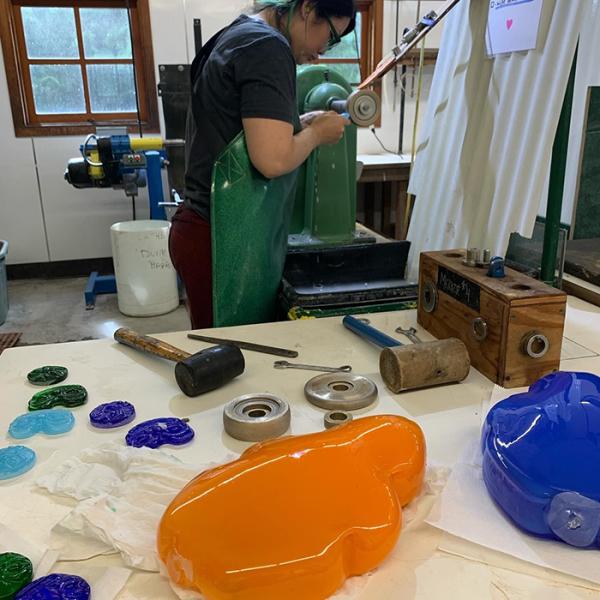
During Worl’s Pilchuck residency, she found herself inspired by the passionate and boundary-pushing community of artists. This was her second time at the Pacific Northwest glass school; she first studied at Pilchuck 10 years ago.
“It's cool to be in a small, isolated but beautiful community that's just a bunch of artists. We're all nerding out over creating pieces in new ways. I feel like I'm like Alice in Wonderland, and everyone's telling me to come down this rabbit hole.”
The residency partnership is designed to allow the artists to explore before they land on a concept for the airport commission. This gave Worl full permission to explore during her residency. With the assistance of her assistant Priscilla Lowe, she spent the first week mapping out her vision for the sculpture; she envisioned a grid of colorful gummy bear shapes formed from glass.
“This residency at Pilchuck Glass School has been really incredible and amazing because not only has it returned me to dip my toe in glass, but it's reminded me of the expansive and talented community that works in glass.”
As a multidisciplinary artist with a goal to make the installation predominantly in glass, Worl needed an opportunity like this to help expand her understanding of glass.
“We've been trying to create a frog out of glass in every possible way we could come up with; I think we have five or six frogs now,” she said. “They don't all look like frogs yet, but the idea is there. And it's really cool to work with the gaffers (specialized glass artists) because there are so many things I can't do with glass, but then for everything I can't do, I learned there are a million other ways that I can do it. So it's challenging me to think outside of the box. I'm uncomfortable and it's good for me.”
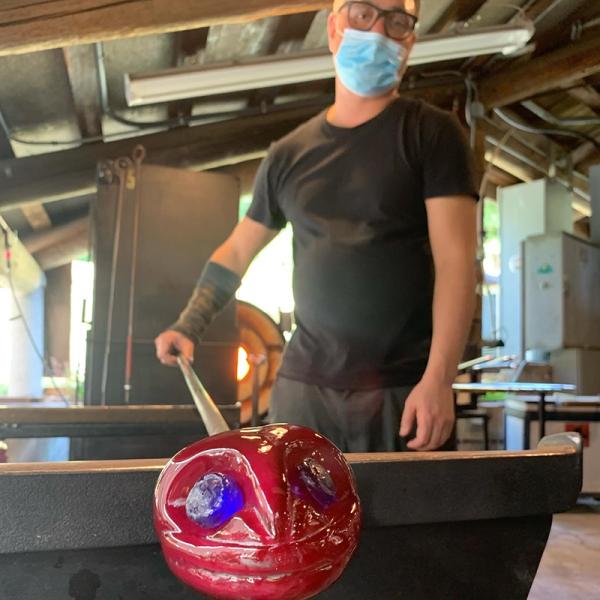 A vision for the new C Concourse
A vision for the new C Concourse
Worl said she is also inspired by the design renderings for the C Concourse Expansion and the beautiful, light-filled space it will become.
“There's a space for sitting and hanging out next to the wall that will have my art. The piece will have high visibility and see a lot of foot traffic. It's a route towards the restrooms and also by the elevator. So it's going to be seen a lot, and that's really exciting.”
Worl is also co-owner of an Indigenous graphic design and art gift shop called Trickster Company with her brother Rico.
Top photo credit: Gabe Re @gabere

